Welcoming a new puppy into your home is an exhilarating experience! Those soulful eyes, infectious energy, and undeniable cuteness are a joy like no other. Yet, amidst all the puppy love, there's one challenge that can feel a bit, well, messy: the potty training process.
The thought of housebreaking a puppy may seem daunting, with visions of accidents and puddles dancing in your head. But fear not! In this comprehensive guide, we will share tips and secrets for how to potty train a puppy, transforming your home into a haven of canine convenience and pristine floors.
How To Potty Train A Puppy
Pick A Potty Training Method
Different pet owners will potty train puppies using different methods, with the common approaches being using a dog crate, potty pads, or artificial grass patch. Each of these tools has its unique advantages throughout the training process.
Potty Pads
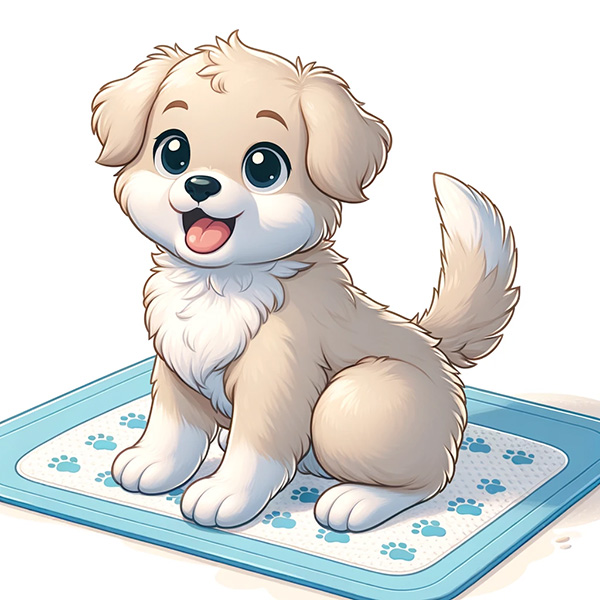
If you opt for potty pads as part of your puppy's potty training, the first step is determining which type best suits your dog's needs and preferences. Select pads that match your dog's size and give your puppy ample time to become accustomed to the pad before they need to use it. When your pet needs to relieve themselves, gently guide them toward the pad and encourage them to do so.
Keep in mind that using training pads will also mean you are encouraging puppies to potty indoors! However, if you are unable to take your puppy outdoors regularly, this method is perfect. In time (about nine months!), your puppy will grow into a dog that can hold its bladder. In the meantime, at least your home will stay clean, and your puppy will be eliminated in one designated potty spot in the house.
Crate Training
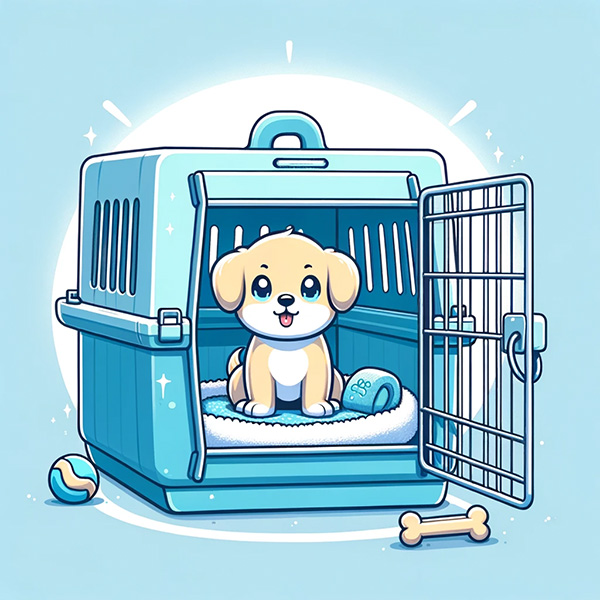
Crate training stands as another effective approach for potty training your puppy. This approach is based on the principle that dogs are reluctant to eliminate in the same place where they sleep. After your puppy has had an evening potty break, direct them to the crate for the night. Upon waking in the morning, promptly take them to their designated potty area for morning relief. For puppies of a young age, you may need to take them out of their crate for a midnight potty break until they are fully house-trained.
While your young puppy may initially resist the idea of being in a crate, dog owners will eventually come to view it as a secure and comfortable space. Although there may be occasional accidents inside the crate, crate training remains a valuable step in helping your puppy progress toward the ultimate goal of potty training. Taking the time to crate training means that your dog has a familiar tool to use with other types of training!
Artificial Grass Patch
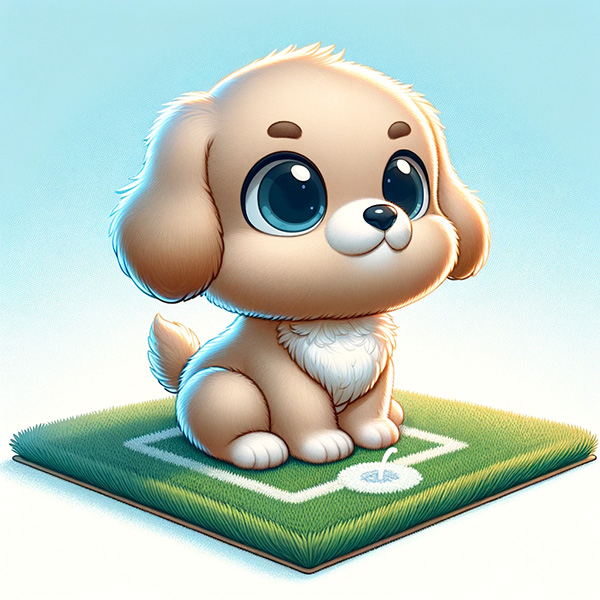
Puppy potty training using an artificial grass patch is a convenient option for pet owners who may not have access to outdoor areas for potty breaks. It serves as a great alternative for dogs that have grass allergies. Choose a high-quality, realistic artificial grass patch specifically designed for pets, ensuring that it is the appropriate size for the breed and age of your dog.
Establish A Routine
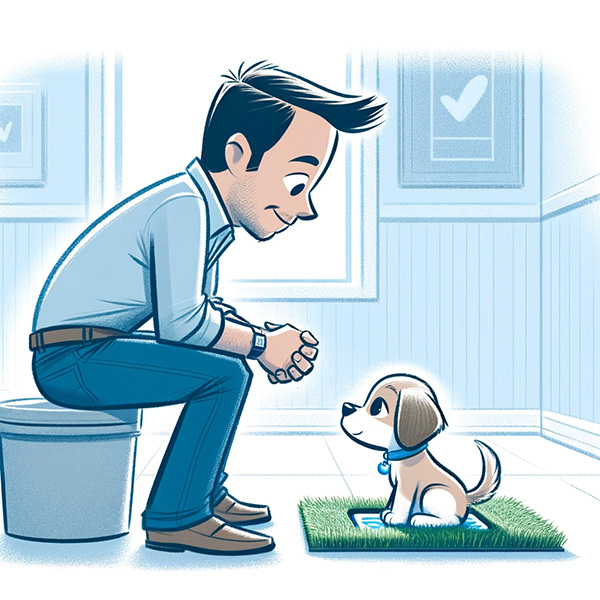
Regardless of which potty training method you choose, setting a routine is crucial for potty training your puppy. Establish a consistent daily schedule that includes designated times for feeding, bathroom breaks, and playtime. The feeding schedule and the potty schedule frequently pair together. For young pups, aim to feed them three to four times a day and expect them to need to potty or poop shortly afterward. Regular mealtimes assist you in predicting when your puppy is likely to need to go potty.
Choose A Potty Spot
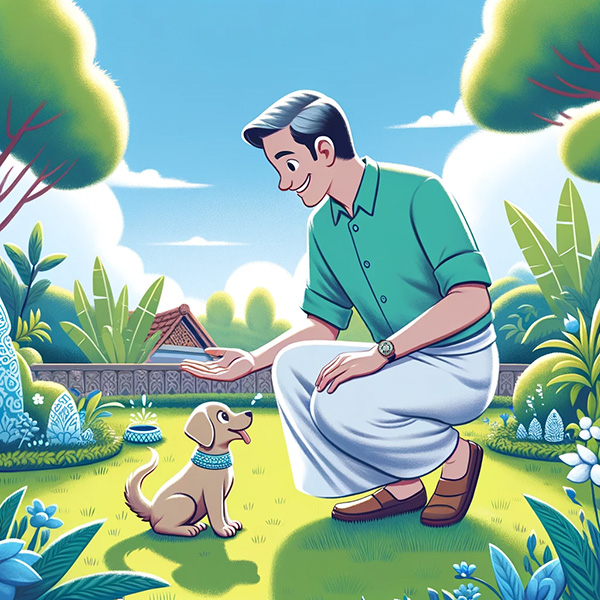
The foundation of house training for your puppy begins with selecting a designated potty spot, preferably located outside your home. This choice serves multiple purposes, such as maintaining a clean and odor-free living space and ensuring your dog understands that indoor bathroom use is unacceptable.
Choose a location that is easily accessible to your puppy. It should be quiet and clean, ideally away from high-traffic areas. This creates a peaceful and distraction-free environment, minimizing the chances of your dog becoming preoccupied with other activities, like fellow puppies playing or children with toys.
Consider the surface for elimination carefully. Common options include grass or dirt. Gravel can also be an excellent choice as it prevents the issue of dead grass. Alternatively, you may choose to use a potty train using puppy pads or a litter box if your lifestyle necessitates these options, although they are not our preferred choices. Most dogs prefer to handle their bathroom business outdoors.
Encourage your puppy to use the designated area by offering positive reinforcement and consider improving the potty space. For example, some male dogs prefer to urinate on objects like fire hydrants. You can even consider adding a decorative fake fire hydrant to your backyard to stimulate your dog's interest in the potty area. This can be a fun and practical addition to your outdoor decor while helping your puppy recognize where to go potty.
Supervision
Supervising your puppy during the day is crucial. Puppies require supervision to prevent indoor accidents and to foster healthy interactions with people and objects. It's common for puppies to chew on objects and nip at humans, behaviors that need to be gently corrected. It takes time to help your puppy learn what behaviors are off-limits.
While allowing your puppy some freedom is fine, it's important to stay mindful of their bladder's fullness throughout the day. Your puppy will communicate with you through various signals, and it's your responsibility to recognize and understand these cues.
One reason why your puppy might have accidents in the wrong place is that you may miss the signs they give. Common indications that your puppy needs to eliminate include:
Crying, barking, or whining.
Pacing or walking in circles.
Sitting by the door.
Scratching at the door.
Sitting expectantly in front of you.
Trembling or shaking.
These signs may occur shortly before an accident, so while supervising your puppy, pay close attention to their body language and behavior.
Take Frequent Trips Outside
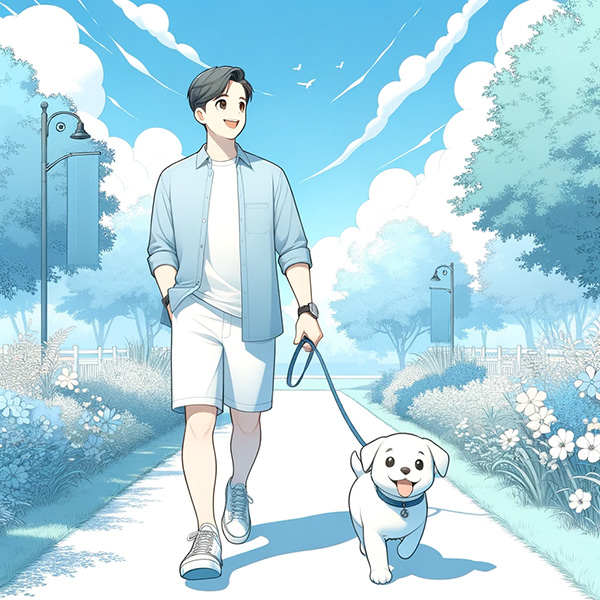
The next step in your training journey is to teach your dog to relieve themselves outdoors. Since you've already chosen the designated potty area, taking your pup outside should be straightforward. It's important to remember to leash your puppies before these outdoor potty breaks to ensure they stay on track and don't wander off.
During these outdoor breaks, it's essential not to grant your pup too much freedom, as it can distract them from their primary purpose. Allow them a maximum of 5 minutes, and if they don't urinate or defecate within that time frame and you believe they still need to, gently guide them back to their designated resting place, often referred to as their crate. Repeat this routine every 15-30 minutes until you achieve the desired results.
Use Positive Reinforcement
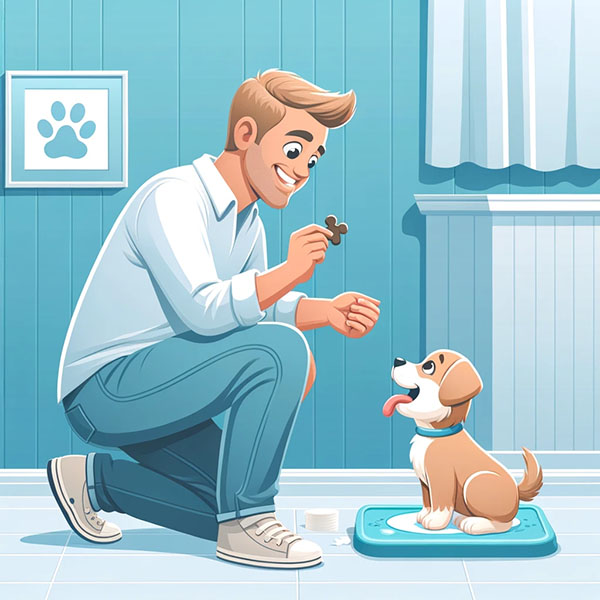
Positive reinforcement is a potent tool in potty training. When your puppy is eliminated in the designated spot, provide immediate enthusiastic praise and a small treat. Use a consistent command, such as "go potty" or "do your business," while they are in the act to create an association between the command and the behavior.
Repeat the Steps Throughout The Day
Repeating these steps consistently throughout the day is crucial for potty training success. It reinforces the desired behavior, helps your puppy establish a routine, and gradually builds good habits. With time, your puppy will become more dependable in their potty training, resulting in a cleaner and happier living environment for you and your furry friend.
Going Solo
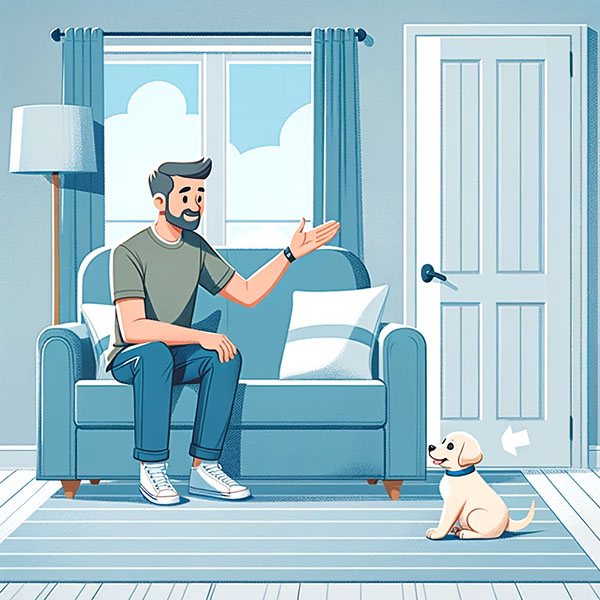
Over time, your dog can start going solo. To initiate the independent potty training process, utilize the previously introduced command word to signal to your puppy that it's time for a bathroom break. As they begin comprehending the command's meaning, you can integrate it with praise to strengthen the desired behavior.
Simultaneously, maintain a strong focus on consistency. Observe your puppy's body language and be attentive to signs they need to urinate or defecate. Issue the command and guide them to the designated spot, ensuring it remains free from distractions. Once they've finished, lead them back indoors. If your pet starts to give a sign at the house door that it needs to go outside, you're on the right track!
Keep in mind that transitioning to independent potty training is a gradual process, and occasional accidents may occur. If this happens, stay positive and return to the previous step to reinforce the behavior before proceeding further.
Tips For House Training
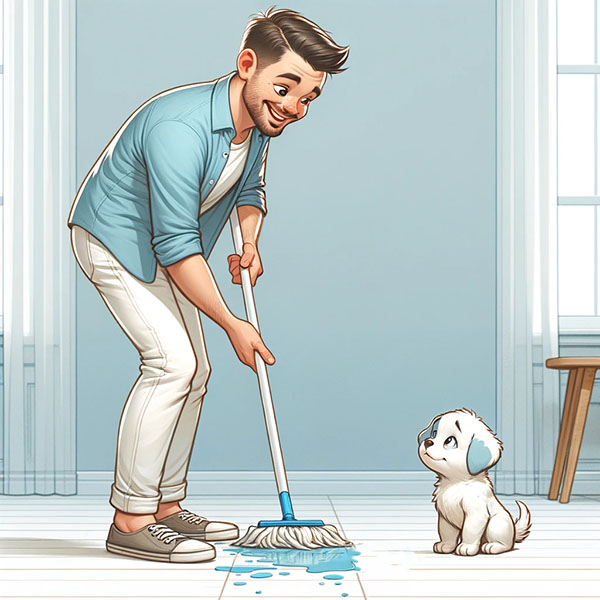
Clean Accidents Promptly
Accidents are inevitable during potty training. In the event of an indoor accident, promptly clean it up using an enzymatic cleaner. A puppy's nose is strong and can smell residual urine. The smell will lead your pup to pee in the same spot again. Using this type of cleaner not only cleans the area but also helps prevent your puppy from returning to the same spot by eliminating the odor.
Be Patient and Consistent
Potty training can be a time-consuming process, so maintaining patience is crucial. Stay consistent with your routine and positive reinforcement, despite setbacks. Refrain from scolding or punishing your puppy for accidents, which can create anxiety and impede their progress.
Watch for Signals
Learn to recognize your puppy's signals when they need to go out. Typical indicators comprise sniffing the ground, circling, emitting whines, or abruptly ceasing play. React promptly to these signals to prevent any mishaps.
Adjust the Schedule
As your puppy matures and develops better bladder control, you can incrementally extend the time between outdoor potty breaks. Adjust the schedule based on your puppy's age and individual needs. Follow your dog's cues, and don't jump to long periods between potty breaks before they are ready!
Gradually Expand Freedom
Once your puppy consistently eliminates outside and has fewer accidents indoors, you can start giving them more freedom inside the house. This should be done gradually and with close supervision.
Limit Water Before Bedtime
Limit your puppy's access to water a few hours before bedtime to minimize nighttime accidents. This increases their likelihood of sleeping through the night without requiring a trip outside.
Keep A Feeding Schedule
Maintaining a consistent feeding schedule will make house training more manageable and provide your puppy with the structure and predictability they need to thrive. Over time, your puppy will develop a routine, making it easier for both of you to anticipate and manage their bathroom needs.
When adjusting your dog's diet or meal timing, be mindful of the potential impact on their bathroom break times and frequency.
Avoid Punishment
Avoid punishing your puppy for eliminating indoors or in an undesirable location. Never resort to tactics like rubbing a dog's nose in it, striking, or swatting your puppy. Such punishments can lead your puppy to associate toileting with fear and may cause them to avoid elimination in the presence of people.
FAQs
How Long Does It Take To Potty Train A Puppy?
The duration of potty training can vary significantly based on various factors. Younger puppies may take longer to become potty trained as they have smaller bladders and less control. Dog breeds also play a role, with some being quicker learners than others. Some dogs are more highly motivated than others. Consistency in training and your puppy's individual temperament are crucial factors. In general, it typically takes a few weeks to a few months for a puppy to achieve full potty training.
When Should I Start Potty Training A Puppy?
The ideal time to start house training depends on the dog's age and breed. Generally, it's best to start potty training when a puppy is around 8 to 12 weeks old. Most puppies at this age have enough bladder control to begin learning where to go potty but are still young enough to be receptive to training. However, for some small breeds, starting as early as seven weeks might be necessary. Potty training can also be applied to adult dogs, but the process may take longer and demand additional patience.
Should I Use Puppy Pads Or Go Straight To Outdoor Training?
Choosing between training pads and outdoor training hinges on your living situation and personal preferences. Training pads can be convenient for indoor training, but some owners prefer to start outdoor training immediately to teach their puppy to eliminate outside. Outdoor training directly reinforces the desired behavior.
How Often Should I Take My Puppy Outside To Potty?
Young puppies possess small bladders and require frequent bathroom breaks every 1-2 hours. You can progressively increase the time between breaks and develop better bladder control as they mature.
Is Crate Training Necessary For Potty Training?
Crate training can be a valuable tool for potty training. It helps teach bladder control and provides a safe space for your puppy. While not mandatory, crate training can expedite the process and prevent accidents when you can't supervise.
What Should I Do If My Puppy Refuses To Go Outside To Potty In Bad Weather?
Motivate your puppy with treats and positive reinforcement. Provide shelter if possible, or consider using indoor alternatives like puppy pads or an artificial grass patch during inclement weather.
